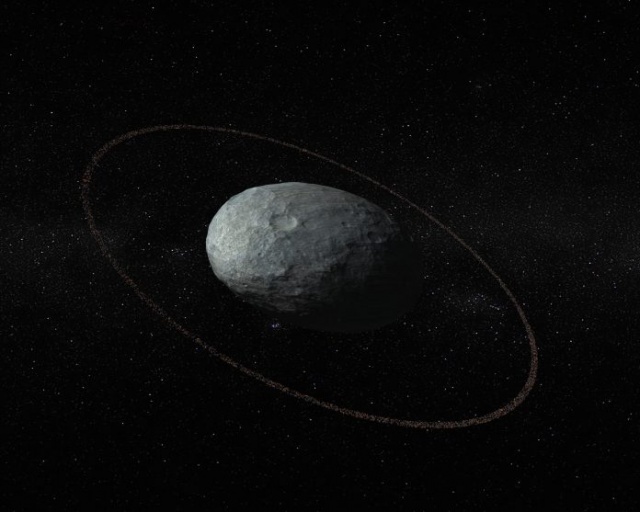Ring around a dwarf planet found beyond Neptune
Researchers from the MTA Research Centre for Astronomy and Earth Sciences (MTA CSFK), Hungary have discovered a ring around the dwarf planet Haumea with the help of a special camera attached to the telescope of the Piszkéstető Observatory. Their findings were published in the 12 October 2017 issue of Nature.
19 October, 2017
“Only three years ago everyone was convinced that rings can exist only around giant planets,” stated one of the authors, Csaba Kiss, regarding the significance of the discovery. “We know that Haumea survived a major collision billions of years ago, as this is the only known trans-Neptune celestial body with its own family of asteroids. If rings can be produced as an effect of collisions, the prevalence of rings around other minor bodies may serve as a new source of information about the development of the outer reaches of the solar system.”
Astronomers relied on the phenomenon of occultation for their measurements. As a celestial body passes in front of a star, the light of the star fluctuates. Therefore, occultation, the length of time a celestial body blots out the light of a star, can inform us about the size of the body. If observed from several places, even the shape of the body can be determined.
The same method was used to determine the size of Haumea as well. However, the special electron amplifying camera (EMCCD) of the Piszkéstető Observatory was needed to discover those slight changes in luminosity that can be a sign of a ring around a body.
 Illustration of the ring around Haumea
Illustration of the ring around HaumeaSource: IAA-CSIC/UHU
The Hungarian research team headed by András Pál noticed that the light slightly dimmed before and after Haumea passed in front of a star. Later measurements confirmed that these changes are caused by a ring, the shape of which could also be determined. The ring is only 70 km thick, which shows how fine the resolution of the images was.
The passing of Haumea between the Earth and a star in January 2017 was observed by twelve cameras from ten locations in Central Europe. The results of the international team were published in the 12 October 2017 issue of Nature.
